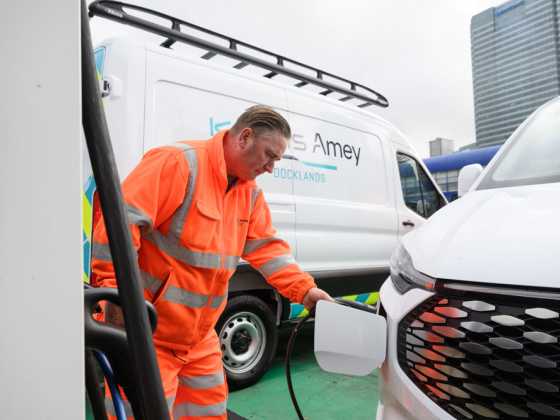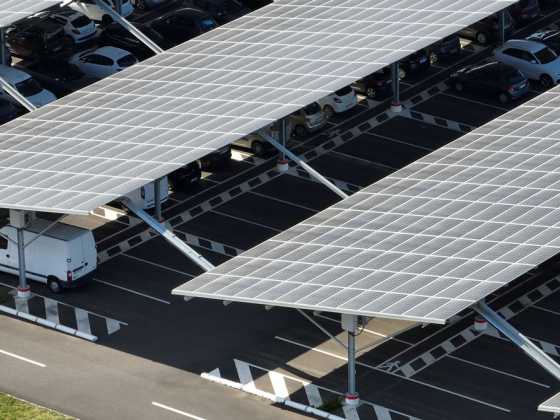Panel discussion: Autonomous vehicles

Self-driving vehicles are believed to contribute to air quality improvements, cut congestion, boost safety and create thousands of skilled jobs in the UK. But is there a place for them on fleets? Our panel of experts take on the debate
In 2016, 85.9 per cent of collisions causing injury involved human error. In the same year, a report published by the Institution of Mechanical Engineers suggested that adopting autonomous vehicles could prevent up to 95 per cent of traffic accidents.
It has also been estimated that driverless technology market could be worth up to £50 billion to UK economy by 2035.
As many of the self-driving cars on trial are electric, this agenda also contributes to better air quality.
As such, the government is ploughing investment into the research and trials of self-driving vehicles, and is pushing through the Automated and Electric Vehicles Bill to get the industry regulated in terms of insurance, and the technology and infrastructure up to scratch.
But is there a place for self-driving vehicles in business fleets, and is it something that fleet managers should be thinking about?
ACFO’s John Pryor believes the reality of fully autonomous vehicles is some distance into the future but in the meantime, more and more systems are becoming autonomous, and that is something fleets should be aware of and can benefit from.
This is echoed by the AA’s Stuart Thomas: “In the short term, both drivers and fleet operators can benefit from enhanced driver aid systems such as Automatic Electronic Braking (AEB), lane assist and blind spot assist. Although these are functionally beneficial for the driver, fleet operators can also see benefits through reduced repair and maintenance costs as the systems can help avoid collisions.”
Once full autonomy is achieved, fleet operators will benefit through boosted efficiency, adds Stuart. He explains: “More journeys will be made with fewer vehicles, leading to fleet downtime and overall operating costs being reduced.
“The duty of care element for fleet operators will also be minimised due to a reduction in employee driving time. Issues such as driver fatigue levels and driver errors will no longer be a concern for fleet operators, allowing their main priorities to be journey completion and vehicle servicing.”
John Pryor cautions that price will also play a big factor in whether fully autonomous vehicles will be used in fleets however. He says: “Fleet operators need to see how viable autonomous vehicles are for their fleet operations, notably in terms of whole life costs. Almost inevitably, the greater the amount of technology, the greater the cost.”
Lightfoot’s Dan Regan points towards the mobility solutions that autonomous vehicles could facilitate, and how these could benefit fleets. He says: “Level five autonomy will give rise to entire new vehicle ownership models, where new companies will be born to provide Mobility as a Service (MaaS). The benefits available to fleets from such models are significant. Pool car fleets in particular could be considerably reduced in numbers as fleet organisations recognise the benefits of mobility as a service. We already know that Lightfoot can reduce vehicle down-time and assist with maintenance scheduling of fleets, but, with Mobility as a Service, this can become the service operator’s issue, for example.”
Infrastructure
With regards to fully autonomous vehicles, John Pryor believes it will be some years before the legislation and infrastructure are in place to enable a switch to driverless cars where “employees can sit back and work as the vehicle ‘drives’ to its destination.”
A report from the RAC last year noted that the greatest demands on road infrastructure from fully autonomous vehicles would be sharing roads with vehicles with partial or no automation. This is because autonomous vehicles react differently to scenarios and other road users would need to be educated to this effect and adapt their own behaviour.
The AA’s Stuart Thomas says: “A major concern for manufacturers is how autonomous vehicles will interact with traditional driver operated ones. AV sensors must be programmed with instructions about how to behave when with other vehicles, or what to do if road users do something out of the ordinary. This was highlighted with the recent publicised incident in Arizona when a driver operating vehicle in autonomous mode collided with a pedestrian crossing the road at night.”
Lightfoot’s Dan Regan agrees, saying: “Consideration needs to be given to the intricacies of the autonomous technology interacting with human drivers – who can often be unpredictable and not always follow the rules of the road.” Giving examples, Dan says: “Have you ever flashed your lights to be courteous and let another vehicle out of a junction? Is an autonomous vehicle expected to react to that and pull into the gap, thanking the human driver by flashing its indicators? Or is it supposed to obey the highway code and interpret that flash as a warning that the other vehicle is there?”
Dan also questions the system’s ability to make decisions – particularly prioritising decisions in an emergency when an accident is unavoidable. He asks: “How will it decide what obstacle to collide with that will cause the least damage or impact?”
There is also consideration of unfavourable driving conditions. The RAC report says: ‘Careful thought will need to be given to the issue of driving in degraded conditions – including those arising from severe weather, road accidents, and emergency situations caused by accidents, breakdowns or trespass. One problematic situation would be the case of roadworks in which lane markings may disappear or be replaced by cones, or where traffic is guided through the roadworks by staff using hand signals’.
Who’s at fault?
The Automated and Electric Vehicles Bill is looking to enable drivers of automated cars to be insured on UK roads and for victims of collisions involving an automated vehicle to have a quick and easy accessto compensation. But there is a debate over who is liable should an accident happen.
John Pryor believes that if it is a truly autonomous vehicle, then liability should not lie with the driver, adding that “a driver could continue to be held liable if they were able to step in and intervene, overriding the technology by making control inputs themselves.”
John continues: “There are many people in the chain that could be held liable after a crash, including drivers, vehicle operators, manufacturers, system developers, car dealers, service providers, data providers, car maintenance firms, or a combination of them all. And it will also depend on the level of automation and driver involvement.”
Dan Regan paints a scenario: “If a vehicle is produced that does not require input or control from its occupants, then any collision fault cannot lie with them. It seems, in my opinion, most appropriate that the manufacturer should field, but not necessarily be accountable for collisions and the resulting claims. This would mean the manufacturer would have to, in turn, claim against a sensor or microchip manufacturer if they found fault that could not have reasonably been detected during vehicle-level failure mode testing and validation.
“This would, of course, open up the almost certain possibility of underwriters providing insurance to manufacturers to cover claims from its customers. Just one of the many models that I’ve heard discussed within the industry – but, in my opinion, a model that seems to make the most sense.”
Stuart Thomas talks through the proposals being suggested in this area: “The Department for Transport (DfT) has proposed amendments to the motor insurance framework to include AVs. This will require changes to legislation, however the government says it will change as little as possible to enable the market to develop the appropriate AV products.
“Proposals include plans for insurance companies to cover both a driver’s use of a vehicle and the car’s autonomous technology. Having appropriate insurance will still be compulsory. The insurance would cover times when motorists are in control and when cars are in automated driving mode.”
Stuart adds: “This follows on from the Association of British Insurers (ABI) call for AV data, made at its annual conference in November. The ABI requested that car makers provide enough data to show who has been at fault in an accident involving driverless vehicles, with a standard set
of data agreed at international level.”
The future mobility mix
Mobility as a Service (MaaS) – where various modes of transport are brought together for one journey and accessed as one service – is being investigated by the government for its ability to take cars off the road. This would therefore ease congestion and reduce air pollution. Autonomous vehicles are also being investigated in these scenarios.
Dan Regan says: “Connectivity facilitates linking different modes of transport seamlessly and effortlessly for the user, providing them with all the necessary information that they feel they need to make decisions on how they connect with other forms of transport. This could mean that combinations of different transport modes like trains, planes, autonomous vehicles and taxis may become much simpler than driving point-to-point using our highways.”
Stuart Thomas points towards the particular benefits this could have for certain sectors of society, such as disabled, elderly and other social groups who may otherwise be unable to drive. He says: “Through mobility demand services, they will be able to travel from their current location directly to their destination.”
John Pryor echoes this thought: “If automated vehicle technologies develop to the extent that vehicles can undertake door to door journeys without the need of a driver at all, they could improve mobility for the elderly and disabled and those without a driving licence, enhancing their quality of life.”
“What’s more parking would no longer be an issue as cars could drop off occupants, park where space is available and return to pick up passengers when required,” John adds.






